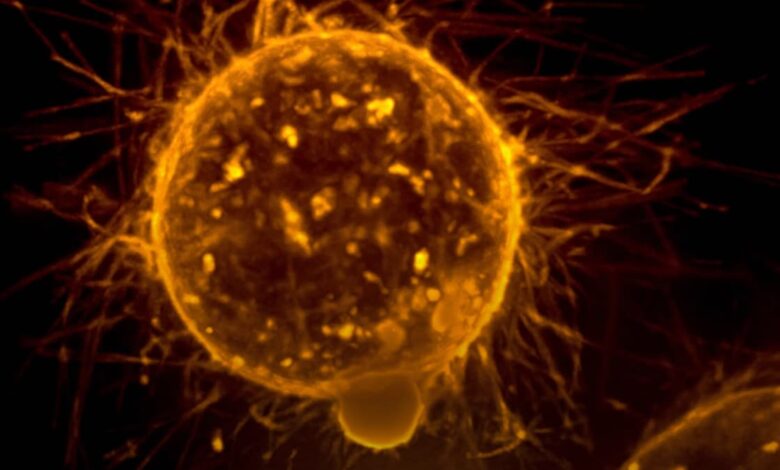Cancer Treatment in Mice With Radioactive Beam Could Open Up a High-Precision Technique to Treat Humans

A new study has demonstrated the successful use of radioactive ion beams to treat tumors in mice. This innovative approach, published on arXiv.org, represents a significant step forward in cancer therapy. Researchers can monitor the precise location of the treatment in real time.
First Successful Treatment Using Radioactive Ion Beams
This research marks the inaugural use of radioactive particle beams for tumor treatment. Scientists employed a beam of radioactive carbon-11 ions to target a tumor near the mouse’s spine with millimetre precision. This advancement is particularly important for tumours located near sensitive organs, such as the spinal cord or brain stem.
How the Technique Works
Traditional X-ray treatments can damage surrounding tissues due to their broad energy dispersion. In contrast, radioactive ion beams concentrate their energy at specific locations. The carbon-11 ions, which are radioactive due to their unstable atomic structure, release positrons upon decay. These positrons can be detected using positron emission tomography (PET), providing a clear indication of where the beam’s particles have been deposited.
Real-Time Monitoring of Treatment
The innovation in this study lies in the ability to treat the tumor while simultaneously tracking the ion beam’s position. Researchers confirmed the beam’s accuracy, effectively shrinking the tumors. This real-time monitoring ensures accurate targeting, minimising collateral damage to surrounding tissues.
Implications for Future Cancer Treatments
According to a ScienceNews report, attempts to track stable ion beams using PET previously faced challenges due to limited positron emissions from stable isotopes. The use of radioactive ion beams results in significantly higher positron emissions, allowing for detailed imaging and confirmation of treatment effectiveness.
This technique not only enhances the precision of cancer treatments but also offers insights into the behaviour of radioactive materials within the body post-treatment. As research progresses, this innovative approach holds promise for refining cancer therapies, allowing for more effective and targeted treatment strategies.




